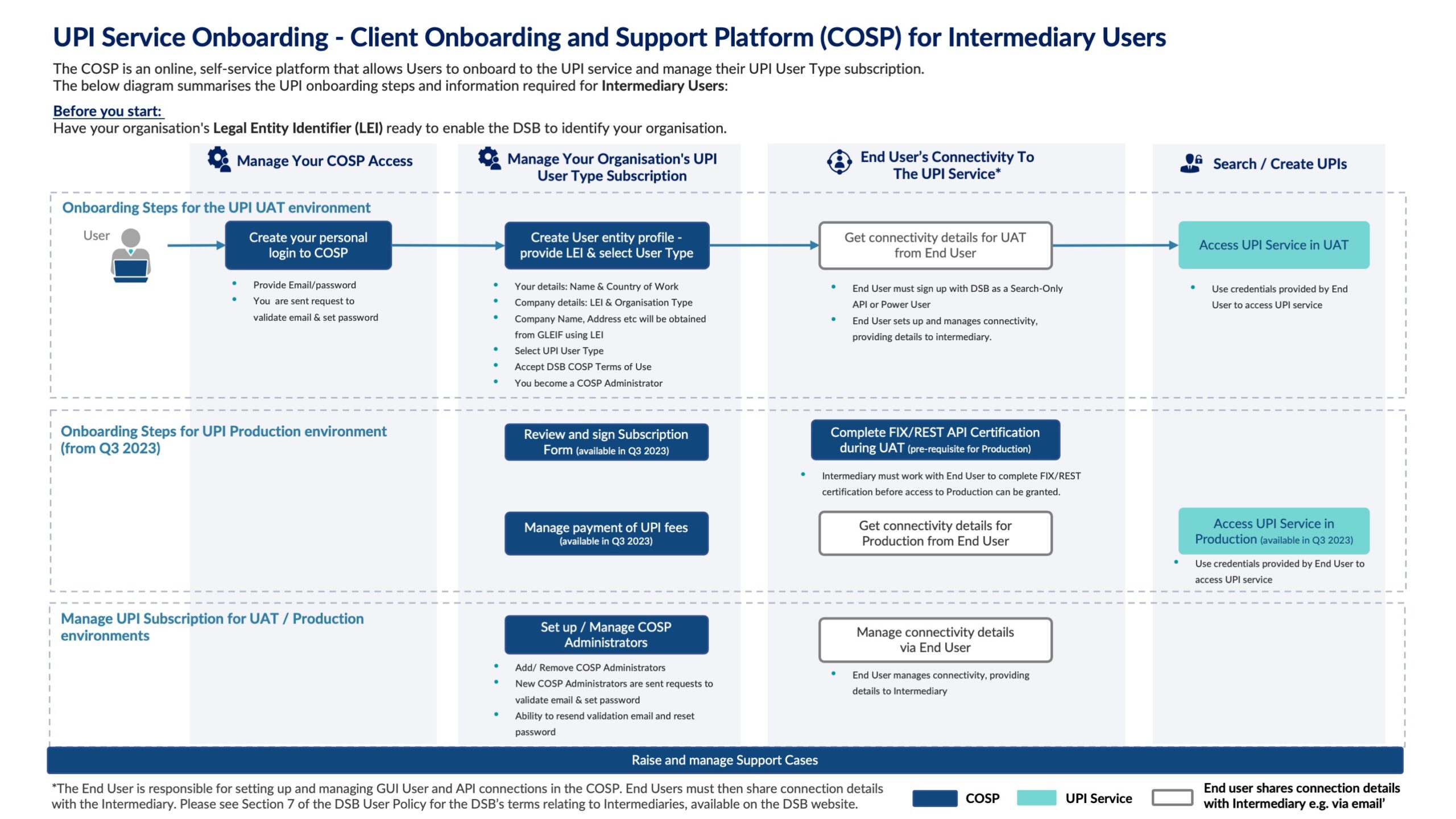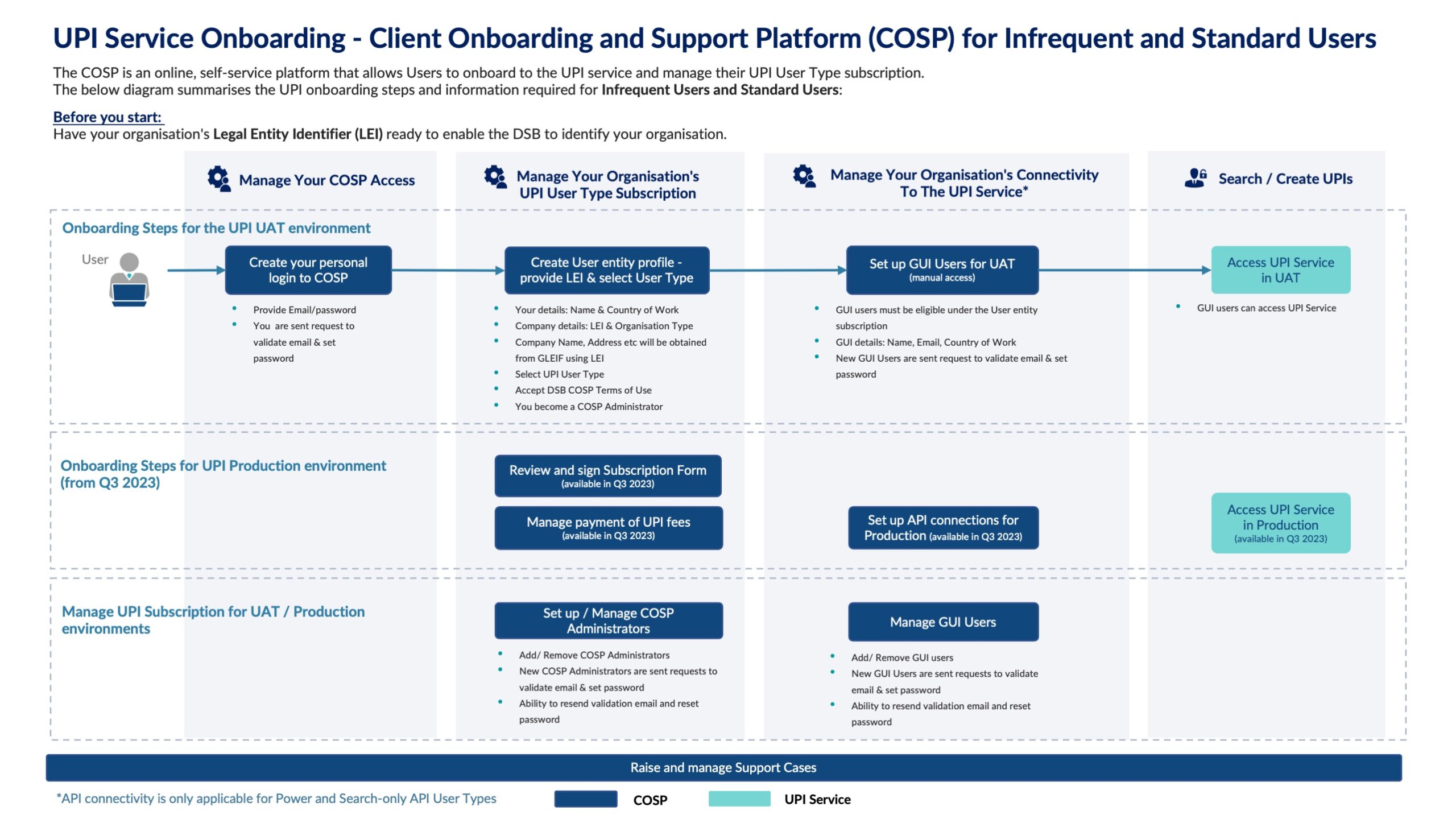What’s the right OTC derivatives identifier for price transparency?
On 29 November 2023, the European Commission (Commission) published its consultation[1] on which OTC derivatives identifier will facilitate price transparency effectively, with the end goal of setting up an EU-wide OTC derivatives consolidated tape.
The Derivatives Service Bureau (DSB) is the issuer for both OTC derivatives identifiers under consideration – the International Securities Identification Number (ISIN – ISO 6166) and the Unique Product Identifier (UPI – ISO 4914) – and will fully support the implementation of either option.
This article summarises the Commission’s proposals and the factors at play.
Context: niche but important
First, some context to this niche but important topic. The Commission launched a targeted review of MiFIR /MiFID II at the end of 2021 (the ‘MiFIR Review’[2]) with the overarching goal of making the European Union (EU) a more competitive place to do business. To this end, the EU’s objectives include refining the existing complex derivatives transparency regime and removing obstacles which have prevented the emergence of an EU-wide derivatives consolidated tape.
Agreed in October 2023, the Level 1 MiFIR Review text decided the transparency scope for OTC derivatives and sets a tailored regime limited to OTC derivatives denominated in Euro, Japanese yen, US dollars and British pounds sterling, targeted at two sub-asset classes:
- Interest Rate Derivatives (IRS) which are whole year tenors of 1, 2, 3, 5, 7, 10, 12, 15, 20, 25 or 30 years, subject to the EMIR clearing obligation and centrally cleared; and
- Credit Default Swaps (CDS) which are either single-name CDS referencing a global systemically important bank (GSIB) and centrally cleared; or CDS referencing an index comprising GSIB and centrally cleared.
With the scope decided, the focus has now moved to Level 2, the detailed rules which underpin the MiFIR Review, and at the centre of this debate is the issue of which OTC derivatives identifier will best serve market price transparency.
Responsibility for these rules is handed to the Commission which is now consulting on which identifier should be used and whether additional reference data should be reported with the chosen identifier.
Two identifiers under consideration
There are two International Organization for Standardization (ISO) identifiers used in the OTC derivatives markets, both issued by the DSB. The ISIN is used in the EU today under MiFIR for both price transparency and market abuse detection purposes. Additionally, market participants will be required to report either the ISIN or the UPI (depending, broadly speaking, on where the derivative or its underlier is traded) under EMIR from April 2024. Therefore, the ISIN is already established in several existing pieces of EU legislation and the supporting IT systems, with reporting of the UPI starting shortly.
The Commission rightly notes in the consultation, however, that “Neither the ISO 4914 UPI nor the ISO 6166 ISIN appear to be entirely suitable unique product identifiers for pre-and post-trade transparency reporting of in-scope OTC derivatives. While the ISO 4914 UPI is not sufficiently granular, the ISO 6166 ISIN is too granular.”
The level of granularity depends on the purpose for which the identifier has been created: The UPI has been designed to aggregate transactions in OTC derivatives and assist regulators identify the build-up of systemic risks at a global level. The ISIN’s primary use is to assist regulators detect market abuse. Consequently, the status quo will not suffice.
The proposed options
In considering the options, the Commission calls out a couple of key points which are crucial in reaching the optimal outcome but have been often overlooked in this discussion:
- the UPI’s attributes are a subset of the ISIN’s attributes (The DSB’s recent Explainer[3] shows the attributes for a range of OTC derivatives, including for IRS and CDS); and
- the relevant UPI code is included in each ISIN record.
The Commission recognises that the key issue with the ISIN is the inclusion of the ‘Expiry Date’ (also sometimes called the ‘Maturity Date’ or ‘Termination Date’) which results in new ISINs being issued daily for IRS. Consequently, price comparisons across any period of time other than intra-day are not feasible for IRS. Daily ISINs are not, however, an issue for CDS, and so the consultation’s two options focus on the IRS:
- Modify the existing ISIN (which already contains the ‘Term of Contract’ attribute) by replacing the ‘Expiry Date’ attribute with the ‘Forward Starting Term’ attribute; or
- Use the UPI and require the reporting of two additional attributes – ‘Term of Contract’ and ‘Forward Starting Term’- separately, outside the identifier.
The two options result in the same attributes being reported for transparency purposes but provide different routes to getting there: inside an identifier (the ISIN) or partly inside and partly outside an identifier (the UPI).
Factors in play
The Commission’s final decision will be interesting: Recent history shows that regulators have tended to favour reference data wrapped under a single identifier for reporting information where accuracy, standardisation and aggregation are important, for example, the UPI, ISIN and LEI. The reason for this is that an identifier is derived from a common source of data which has been populated based on standardised rules and so the reference data quality tends to be higher than when data is reported in separate fields. Aggregation is also easier where there is only one data point to aggregate rather than multiple data points.
The US, however, has decided to use the UPI with additional, separate attributes approach for price transparency purposes although it uses dates rather than tenor for the additional attributes.
The Commission’s ‘UPI plus additional, separate attributes’ option focuses on the tenor attributes of ‘Term of Contract’ and ‘Forward Starting Term’ rather than dates, following the market convention seen in proprietary OTC derivatives identifiers. Market participants involved in pricing, valuation and trading of liquid financial instruments require tenor information upfront in an easily consumable way. Given the transparency regime focuses on benchmark (whole year) IRS, it may prove easier for searching, and more accurate for price transparency, to use the tenor rather than calculate it from the date.
Finally, the consultation touches on the matter of IT system changes which will be required for either option. This will impact both regulators, in particular ESMA, and market participants. Today reference data is collected and published centrally by ESMA in its Financial Instrument Reference Data System (FIRDS). FIRDS has been designed on the principle of uniqueness of a single ISIN reference record and collects the full set of ISIN attributes for each instrument, across asset classes (e.g. shares, bonds as well as derivatives). A modification to the ISIN will fit with the existing FIRDS logic and the approach for other asset classes. A move to reporting the UPI and additional attributes will require more significant changes to IT systems and FIRDS.
What next?
The consultation closes on 9 January 2024. The Commission will decide which approach to mandate and is expected to publish its final rules by mid-2024. The DSB expects there will be a period of implementation following the decision and is committed to supporting an effective transition for either outcome.
[1] https://finance.ec.europa.eu/system/files/2023-11/2023-otc-derivatives-identifier-consultation-document_en_0.pdf
[2] https://data.consilium.europa.eu/doc/document/ST-13972-2023-INIT/en/pdf
[3] https://www.anna-dsb.com/download/the-otc-derivatives-identifier-framework-a-closer-look/














